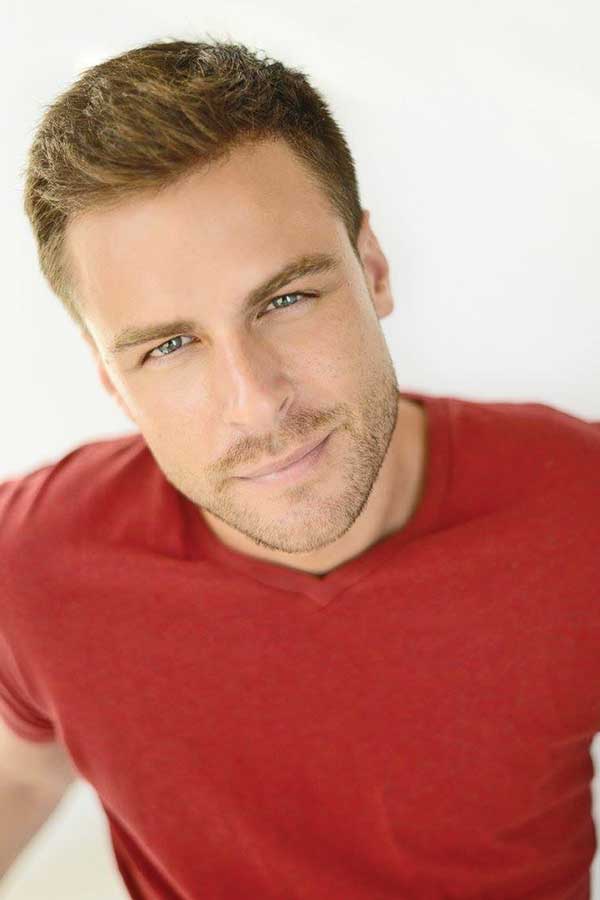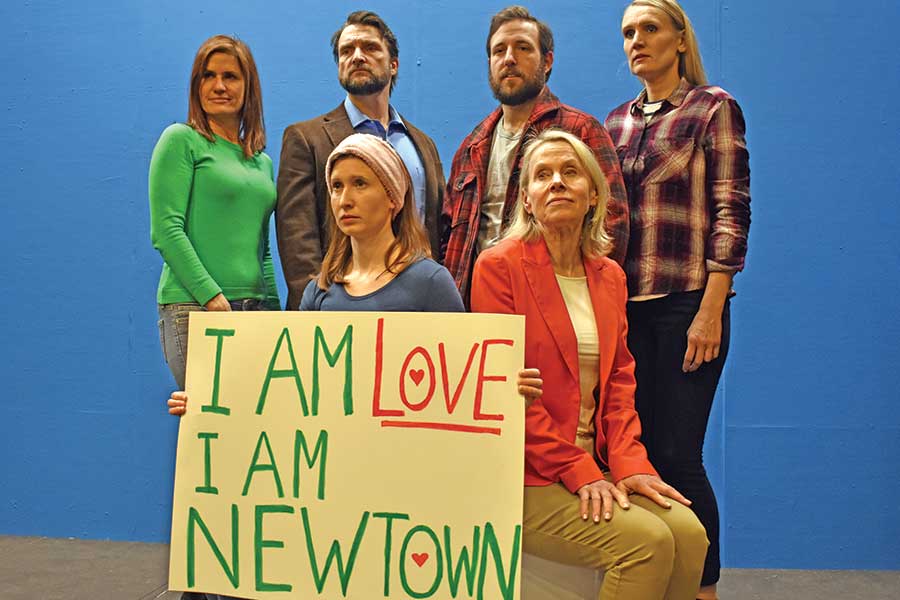Eric Ulloa didn’t set out to stage the aftermath of the 2012 mass shooting at Sandy Hook Elementary School in Newtown, Conn., where a gunman killed 20 children and six adults.
“All I knew was I was growing tired of complacency and frustrated by what was happening in the world and in our country,” the out playwright said.
“I felt like my hands were tied in helping. I can’t donate a great amount of money to the people that are lobbying. I’m not a politician so I can’t enact change that way. How can I do more than the letter-writing I was doing and rallying? I decided I was going to use my voice.”
So Ulloa visited the Sandy Hook community.
“I started listening to the people that wanted to talk to me because I was wondering what a town goes through six months after all this, when there are no more news stories or camera crews. Everyone just left. Now this town is trying to come together. I just went there to listen.”
Halfway through his first week there, Ulloa started to envision a stage for the community’s reactions. He ultimately teamed up with out directing partners Scott R. Grumling and T. Patrick Ryan to create “26 Pebbles,” which debuted two years ago at the Human Race Theatre in Dayton, Ohio, and is beginning a two-week run at Allens Lane Art Center in Mount Airy.
The production is presented in the style of “The Laramie Project,” a play about the aftermath of the 1998 murder of openly gay college student Matthew Shepard in Laramie, Wyo. The performances included actual dialogue from a series of recorded interviews with people of the town throughout a couple of years.
Ulloa reached out to “The Laramie Project” writer Moisés Kaufman for guidance on how to tackle such a heavy subject.

ERIC ULLOA
“I fully expected to not be written back to, but he wrote me back immediately, and we sat and talked for an hour about how he went about it and things he would have done differently now,” Ulloa said. “I have tools in possession now that they didn’t have back then. So, to be honest, ‘Laramie’ got me going on my journey.”
Much of the dialogue in “26 Pebbles” is from interviews with people from the towns of Newtown and Sandy Hook. Six actors portray 19 characters from the community.
“Eric has done a great job to keep the political elements at bay,” Grumling said of the playwright. “He is honestly telling the story of the people he interviewed and how this event affected them both physically and emotionally. By simply telling the story of the residents of Newtown without a lot of the politics involved, the audience is very open to listening and participating in their story.”
The writer and directors said they knew that taking on one of the most polarizing and tragic events of the last decade for a stage production would draw strong opinions — and that they were prepared for the criticism.
“I received a lot of pushback from various angles; from people that said the story shouldn’t be on stage or from gun-rights advocates thinking this will be an anti-gun piece,” said Ulloa. “One person made some comment about ‘another left-wing liberal anti-gun piece.’ My response was if you want to come see it, your ticket is on me. The piece is not about that at all. Any effect or pushback or bit of fear I may have had about how it would land quickly evaporated.”
The play doesn’t send a political message, the creators said.
“[It] doesn’t even try to politicize the issues of gun control,” Ryan said. “We even had an actor that didn’t audition for the show because it wasn’t political enough. The issues of whether folks are pro-gun or anti-gun are briefly mentioned, as is the topic of mental illness that the shooter was diagnosed with. But it is presented within the entire framework of the show and not pulled front and center to be an issue.”
Ulloa said it surprised him that the effect on the Sandy Hook community received little press coverage. But what struck him most was that the townspeople didn’t entirely seem to blame shooter Adam Lanza.
“There was a great sense of community responsibility, which I found to be a very-enlightened reaction for just six months after something so horrible happened in their town. They immediately went into the mode of: How did this happen here? What are we doing wrong? How can we do better? What about the other kids?
“That was very powerful to me, because we tend to find a scapegoat and find a monster to point our finger at. We absolve ourselves from thinking about it anymore because we find someone to blame. They seemed to say, ‘No, we’re taking the blame and we’re going to figure out how this happened.’ That was really ahead of its time for where they were in the grieving process.”
Grumling noted that both “The Laramie Project” and “26 Pebbles” document, through interviews, how their respective communities responded to an act of violence.
“I think it is important that we have artists dramatize these stories so we can go beyond the media coverage and hear the authentic voices of the community and how it affected them,” the co-director said. “Violence, in any form, is an unfortunate reality in today’s world. I think audiences who see ‘26 Pebbles’ will connect the dots between these stories as well as the mass shootings at Pulse Nightclub, the Las Vegas concert and the Parkland, Florida, high school and realize no one is immune from experiencing tragedy on any scale. Hearing these stories can encourage us to learn more, talk more and, most importantly, listen more.”
Ulloa said he had a personal connection to the 2016 Pulse Nightclub shooting, which added another layer of resonance to “26 Pebbles.”
“I went to college in Orlando. I was at Pulse’s opening night. A lot of my friends were bar staff there,” the writer said. “So, when that happened, for 24 hours I was wondering if I was going to see a name I knew on that list of victims. I actually did not, fortunately. But it struck home extremely hard because I felt like somebody had come in and personally attacked my memories and my past.”
“An evening out at a concert, at a movie, at a nightclub, is a game of chance,” added Ryan. “The gay community was hit hard with that realization with Pulse Nightclub.”
And while Pulse is not mentioned in “26 Pebbles,” the co-director said, “the shadow of all mass shootings hangs in the memories of the audience. Columbine is the only other reference, and that is because as the numbers [of victims] increased, the realization was that Sandy Hook passed Columbine.”
Allens Lane Art Center presents “26 Pebbles” March 1-17, 601 W. Allens Lane. For more information or tickets, call 215-248-0546 or visit www.allenslane.org.

